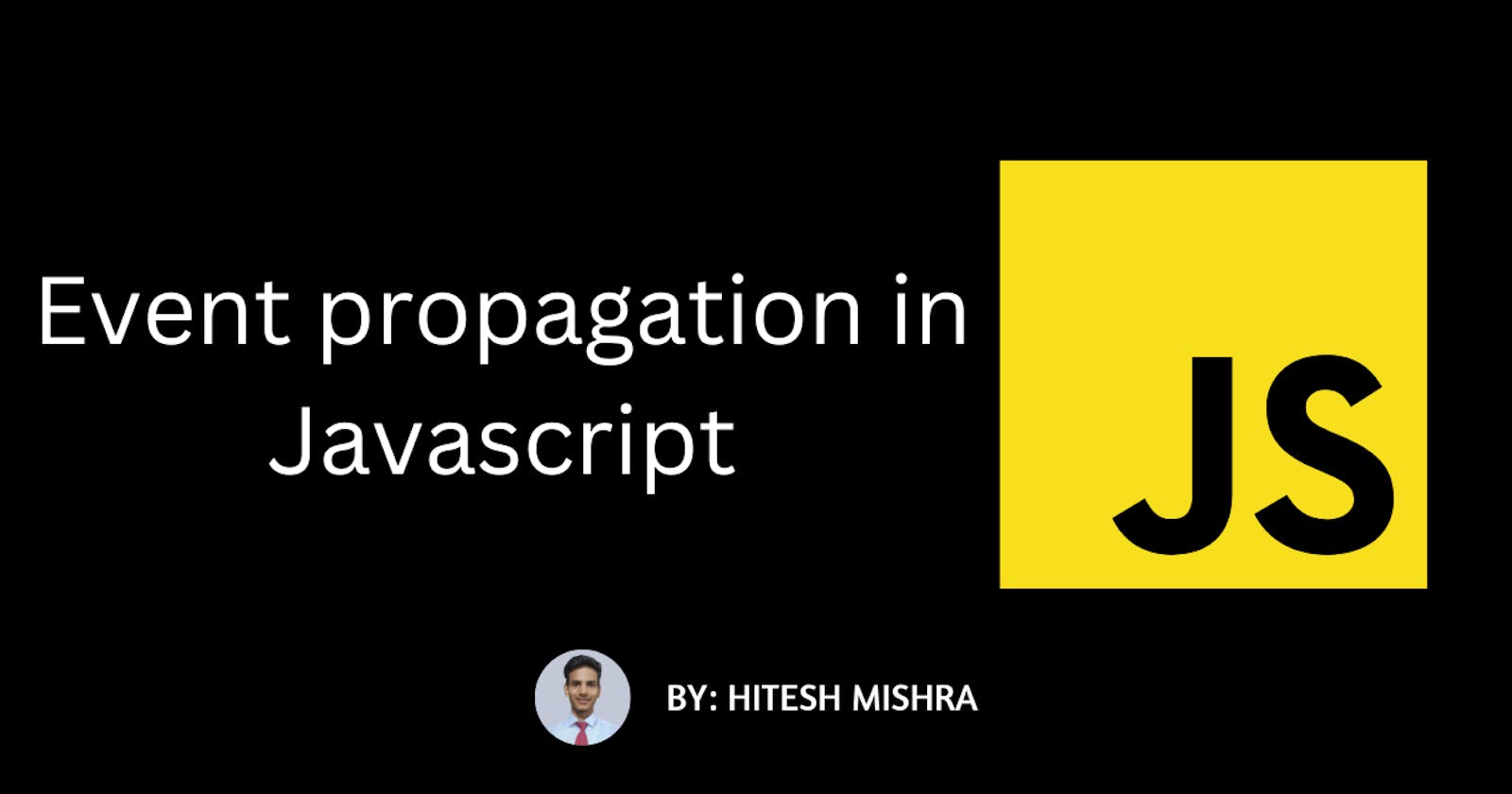Bubbling and capturing in javascript
"Understanding the Event Propagation Mechanisms in JavaScript: A Comprehensive Guide to Bubbling and Capturing"
In JavaScript, bubbling and capturing are two event propagation mechanisms that describe how events are processed in the DOM (Document Object Model) hierarchy.
Event propagation
Event propagation is the way events propagate through the DOM hierarchy, from the target element up to the root of the document or down to the target element's descendants. The two ways of propagating events are bubbling and capturing.
Bubbling
Bubbling is the default event propagation mechanism in the DOM, which means that an event first fires on the target element and then propagates upwards through its ancestors until it reaches the root of the document. This means that if you have nested elements inside each other, a click event on an inner element will also trigger any click event handlers registered on its parent elements.
To illustrate this, consider the following HTML markup:
<div id="parent">
<div id="child"></div>
</div>
If you click on the #child element, the click event will first fire on the child element, and then propagate upwards to the parent element. If there are any event handlers registered on both elements, they will both be triggered, in the order that they were registered.
Capturing
Capturing is the opposite of bubbling. It starts at the root of the document and propagates downwards to the target element. This means that if you have nested elements, a click event on an inner element will first trigger any click event handlers registered on its parent elements, before eventually reaching the target element.
To use capturing, you need to set the capture flag to true when registering the event listener. For example:
document.getElementById('parent').addEventListener('click', function() {
console.log('Parent clicked (capturing)');
}, true);
document.getElementById('child').addEventListener('click', function() {
console.log('Child clicked');
});
In this example, the event handler for the parent element is registered with the capture flag set to true. When you click on the child element, the event will first trigger the parent event handler (in the capturing phase), and then trigger the child event handler (in the bubbling phase).
Why they are used
Bubbling and capturing are used to handle events that occur on elements that have nested children. By default, events bubble up from the target element to the root of the document. This allows you to handle events at different levels of the DOM hierarchy. For example, you might want to handle a click event on a button that is inside a modal dialog, but also want to handle a click event on the modal dialog itself.
Capturing is less commonly used, but can be useful in certain situations, such as when you want to intercept an event before it reaches the target element.
How to use them
To register an event listener that uses bubbling, you simply need to call the addEventListener method on the target element, passing the event name and a callback function as arguments. For example:
document.getElementById('child').addEventListener('click', function() {
console.log('Child clicked');
});
To register an event listener that uses capturing, you need to set the capture flag to true. For example:
document.getElementById('parent').addEventListener('click', function() {
console.log('Parent clicked (capturing)');
}, true);
Where to use them
Bubbling and capturing can be used on any element in the DOM hierarchy. They are particularly useful for handling events on elements that have nested children, such as lists, menus, and modals.
Things to keep in mind
When using bubbling, you need to be aware that events will propagate up through the DOM hierarchy, triggering event handlers on parent elements as well. This means that if you have multiple event handlers registered on different elements, they will all be triggered in the order that they were registered. To prevent an event from propagating further up the DOM hierarchy, you can call the stopPropagation() method on the event object in your event handler.
When using capturing, you need to be aware that events will propagate down through the DOM hierarchy, triggering event handlers on parent elements before reaching the target element. This can be useful for intercepting an event before it reaches the target element, but can also cause unintended consequences if you're not careful.
It's important to understand the order in which events are processed in the DOM hierarchy, and how bubbling and capturing affect this order. Events always start at the target element and propagate either up (bubbling) or down (capturing) the DOM hierarchy, triggering event handlers as they go. Event handlers are processed in the order that they were registered, regardless of whether they use bubbling or capturing.
When registering event listeners, it's important to consider whether you want to use bubbling or capturing, and whether you need to handle the event on the target element or on one of its parent elements. If you're not sure which to use, it's generally best to use bubbling, as it is the default event propagation mechanism and is easier to understand and reason about.
Conclusion
In summary, bubbling and capturing are two event propagation mechanisms in JavaScript that describe how events are processed in the DOM hierarchy. Bubbling is the default mechanism, where events propagate up from the target element to the root of the document, while capturing is the opposite, where events propagate down from the root of the document to the target element. Bubbling and capturing are useful for handling events on elements that have nested children, and can be used on any element in the DOM hierarchy. When using bubbling or capturing, it's important to be aware of the order in which events are processed and to consider whether you need to handle the event on the target element or on one of its parent elements.
